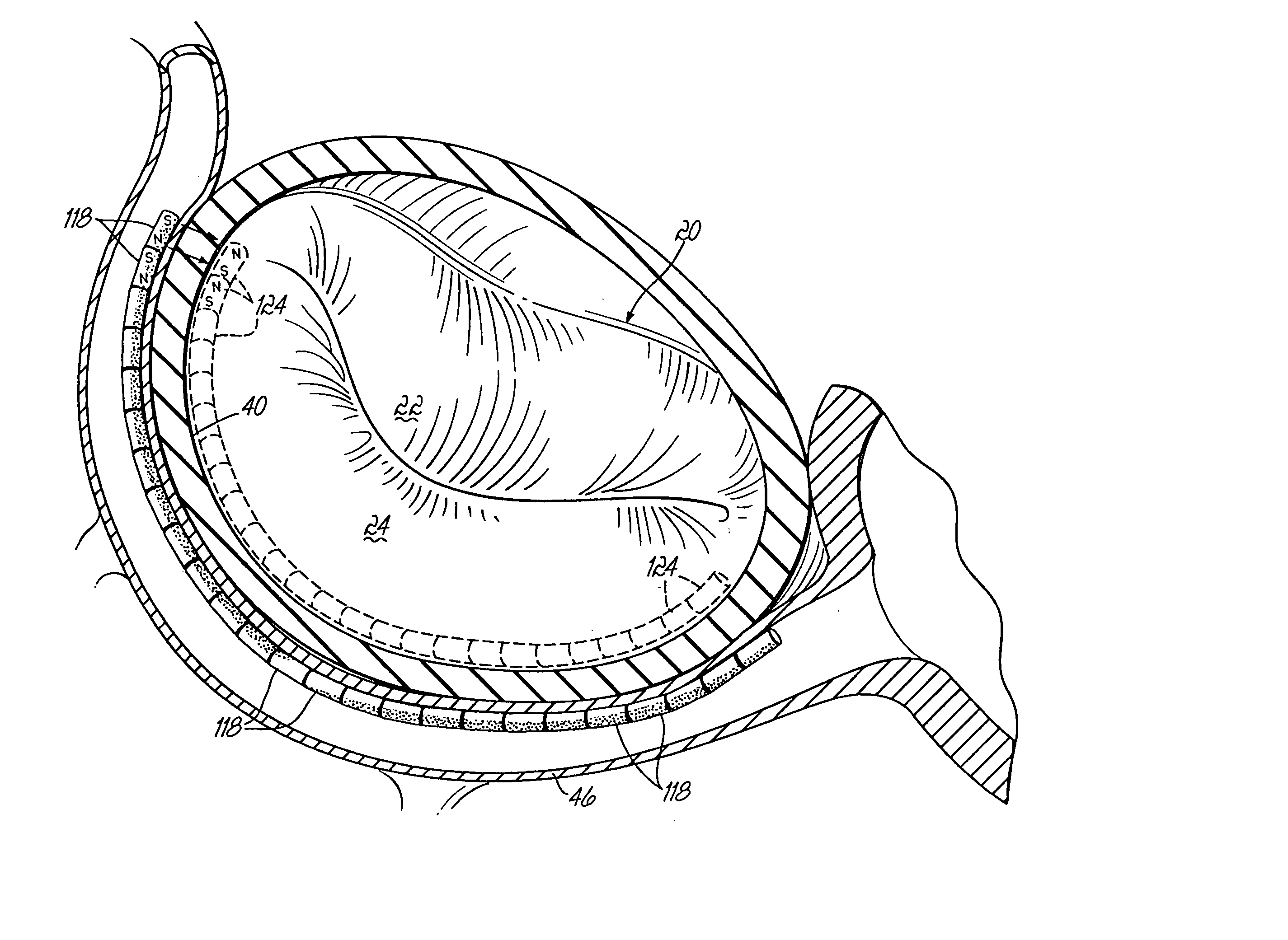Tissue fastening systems and methods utilizing magnetic guidance
a technology of tissue fastening and magnetic guidance, which is applied in the field of tissue fastening systems, can solve the problems of many types of ailments, dilation (stretching) of the mitral annulus, and incongestive heart failur
- Summary
- Abstract
- Description
- Claims
- Application Information
AI Technical Summary
Benefits of technology
Problems solved by technology
Method used
Image
Examples
Embodiment Construction
[0113] In this description of illustrative examples, like reference numerals refer to like element throughout the drawings. Like reference numerals with prime (′) marks or double prime (″) marks refer to like structure except for minor differences which will be apparent. FIGS. 1A and 1B illustrate an improved catheter delivered fastener system 50′ which involves placing a permanent fastener or anchor 60 from the CS 46 through the wall of the left atrium 12 proximate annulus 40 for anchoring purposes. This improvement may be applied to the prior cinching method illustrated in FIG. 1 discussed above. The fastener 60 may be deployed and anchored in various manners, including those discussed further below. Because the fastener 60 extends not only through the delicate CS tissue, but also through the thicker tissue of the left atrium 12, secured anchoring takes place and, upon cinching using a flexible tensile member 54, the annulus 40 may be reduced to correct for a prolapsed valve or ot...
PUM
| Property | Measurement | Unit |
|---|---|---|
| Luminous flux | aaaaa | aaaaa |
| Length | aaaaa | aaaaa |
| Flexibility | aaaaa | aaaaa |
Abstract
Description
Claims
Application Information
 Login to View More
Login to View More - R&D
- Intellectual Property
- Life Sciences
- Materials
- Tech Scout
- Unparalleled Data Quality
- Higher Quality Content
- 60% Fewer Hallucinations
Browse by: Latest US Patents, China's latest patents, Technical Efficacy Thesaurus, Application Domain, Technology Topic, Popular Technical Reports.
© 2025 PatSnap. All rights reserved.Legal|Privacy policy|Modern Slavery Act Transparency Statement|Sitemap|About US| Contact US: help@patsnap.com



